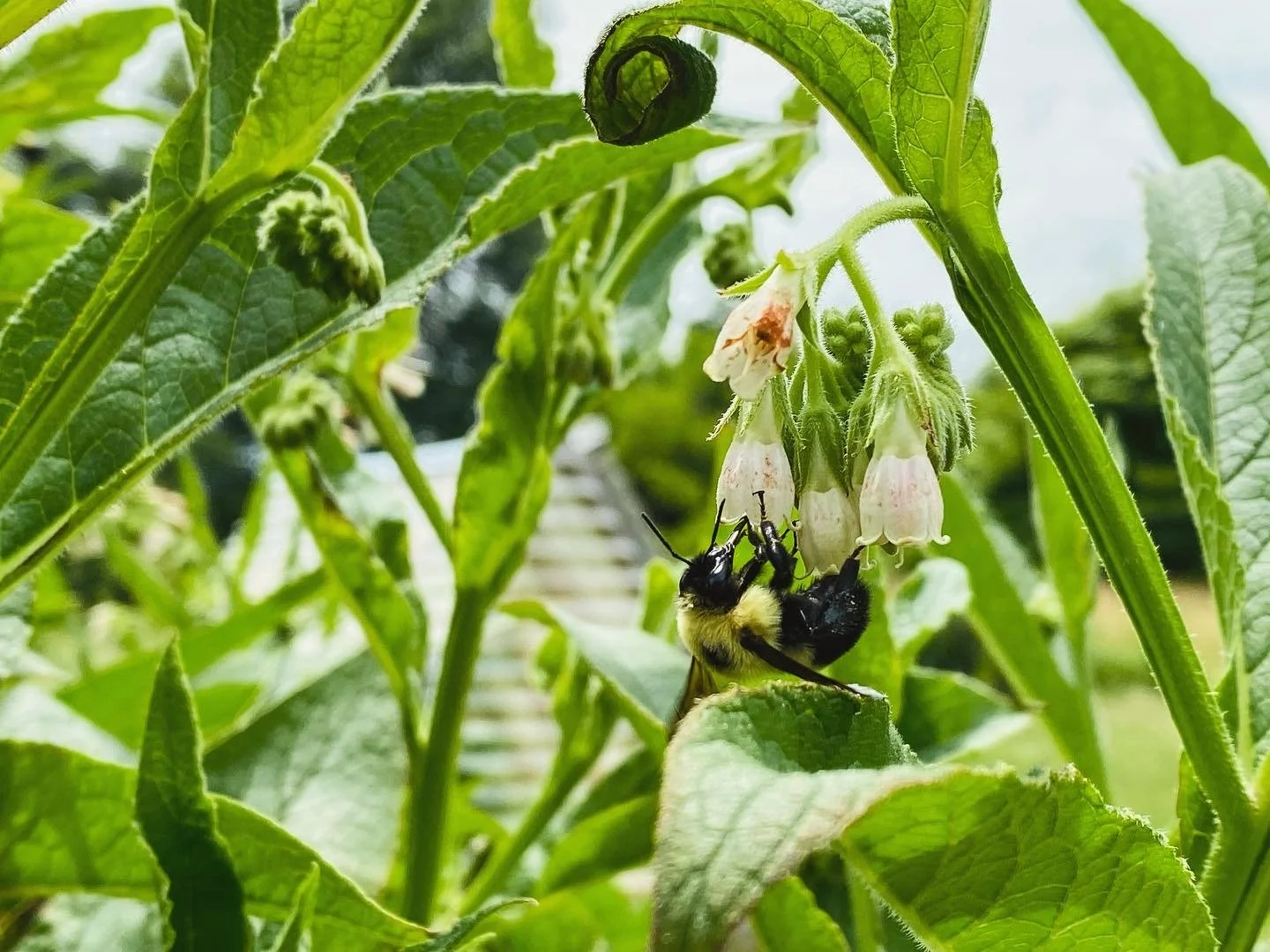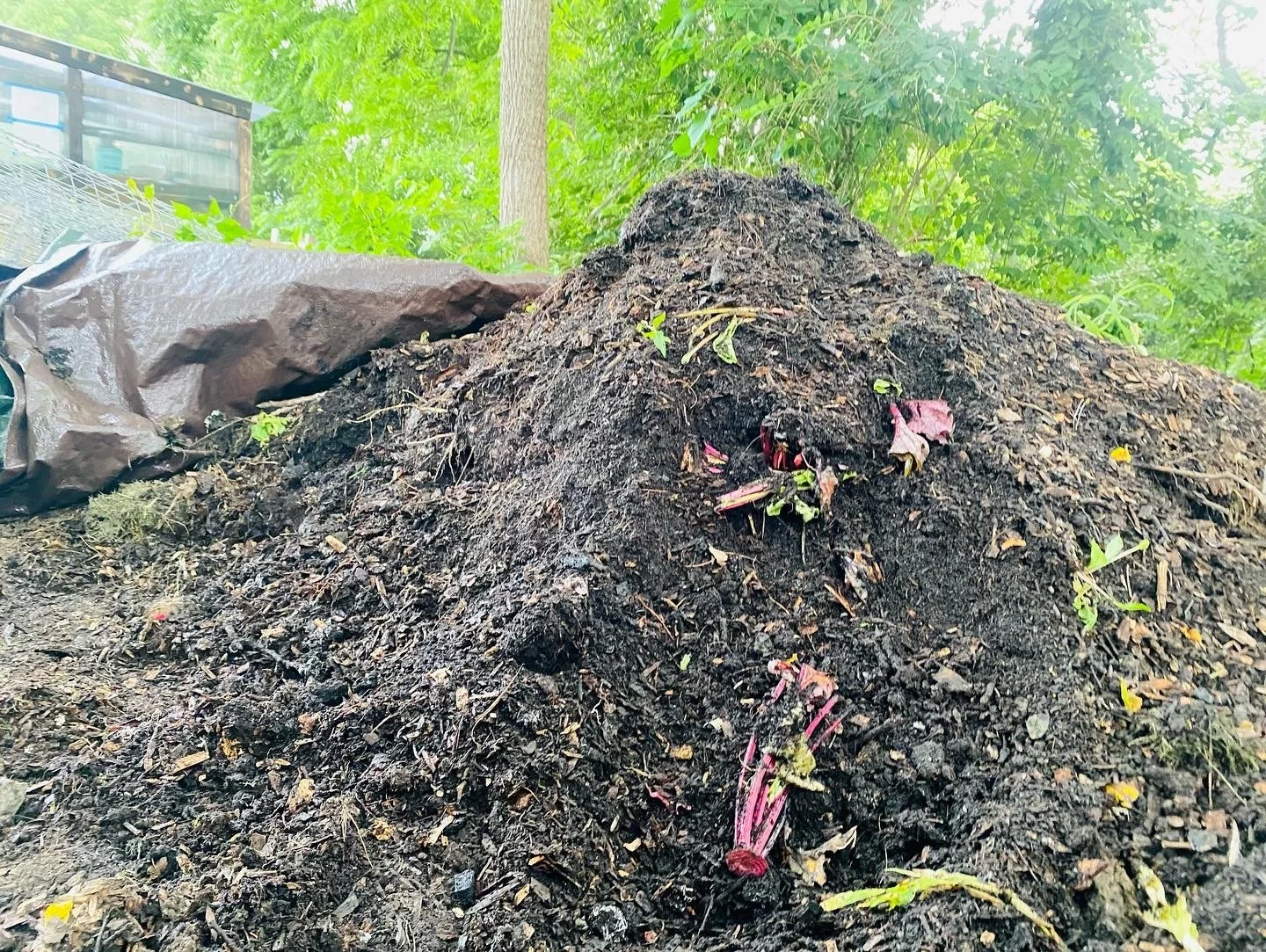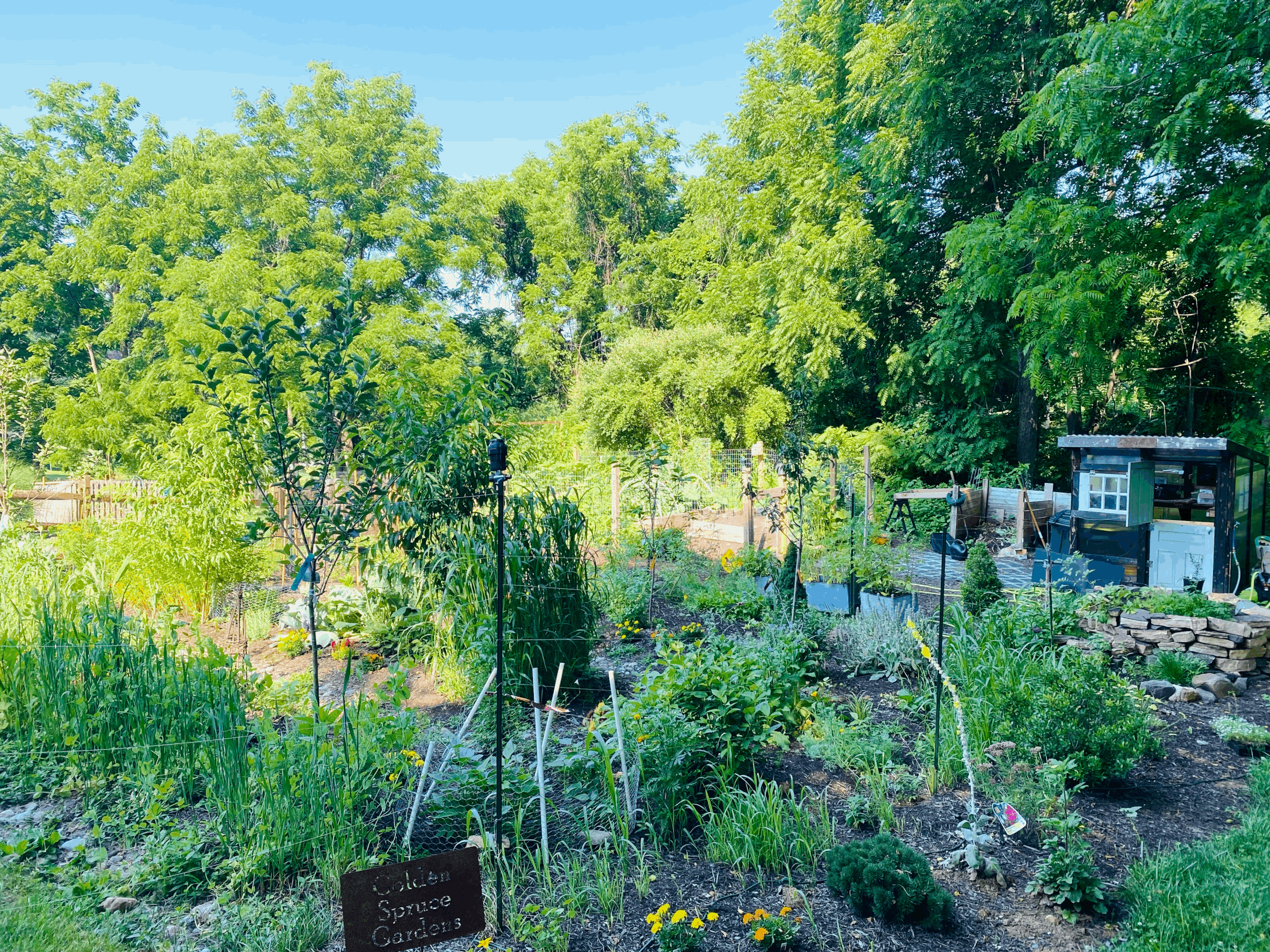What is a Food Forest? How does it build healthy soil?
A permaculture food forest, otherwise known as a “Forest Garden”, serves many important functions. Some of the main these are as follows; supporting soil life, mimicking natural systems, providing habitat, maintaining nutrient balance, supporting healthy water cycling, controlling pests, healing our planet, and providing food and resources for you!
A food forest is a diverse planting of edibles, medicinals, perennial pollinators, dynamic accumulators, nitrogen fixers, and many beneficial plants that are structured to mimic natural ecosystems. They provide a number of wonderful benefits thanks to the use of perennial plants, water harvesting, building the soil food web, creating critter habitat, building the soil food web, and taking advantage of all fillable growing space in tightly packed guilds that work in conjunction with one another based on functions each living thing serves.
In a food forest, the soil is very alive, plants function as a living mulch while the soil food web and nitrogen fixers provide food. Lupine is a good example of a beautiful plant that supports pollinators, and we can chop and drop to feed the soil. Comfrey and Borage as well. Shrubs such as Gummi berries fix nitrogen and taste good. Permaculture offers more efficient ways to ward off pests as well, through looking at the natural functions needed to thrive not just survive, plants will actually want to support each other like a community.
Guild around your fruit trees with annual vegetables as well as perennials. Add lettuce and chard around fruit trees, but plant native and perennial vegetables in the guild as much as possible. Perennial vegetables may be a little different than what you are used to eating, however, they come back year after year, sometimes living up to 50 years. Perennial vegetables are planted once. They build soil, provide nutrients, improve your gardens resilience, support wildlife, cultivate abundance for people, plants, and wildlife. Add them around landscaping as well. Here’s a small list of perennial vegetables that you can begin searching for, as they are not often easy to find.
Nine Star Broccoli, Miners lettuce, Checker mallow, Asparagus, Chicory, Chinese yam, Dandelion, Daylily, French sorrel, Garlic chives, Giant Solomon’s Seal, Kosmic or Grex Kale, Ramps, Rhubarb, Sunchoke, Turkish Rocket, Egyptian Walking Onion, Watercress, Horesradish, Raddichio, Tree Collard, and even perennial potatoes.
Nitrogen can be given from beneficial shrubs or smaller trees like a service berry or gummi berry.
Native plants support predators like beneficial insects that keep pests in balance. Mulching your food forest and garden like the forests duff layer is useful to you, to the plants, and to the beneficial critters. Adding logs and rock piles on the south side of fruit trees, especially when they are young is also a useful trick.
A small planting tip. Plant on east or west sides in a food forest, as to not choke out the south sun in our hemisphere. Don't out compete for sun. We want to have roots in the ground year-round in our food forest to keep soil fed and the structure held in place.
Soil needs life. We can't just focus on nitrogen, phosphate, potassium, calcium, magnesium, and iron. Pill bugs, earthworms, millipedes, bacteria, and fungi are examples of soil life that unlocks these nutrients and protects plants from diseases. Nematodes, protozoa, and arthropods release nutrients by being predators. Overall, a diverse food web keeps disease in check and promotes healthy soil.
Fungi will interact with your plants and share nutrients. Your plants feed root exudates into the soil and then the plant gets nitrogen from the fungi that eat the exudates. These fungi hold the soil together and support life while also keeping it in check. Mycorrhizal fungi hold water, pass nutrients onto plant life, and can create a living network that is miles long.
Plants are living mulch. Every time that we till the soil, we destroy the soil food web. Living roots in the ground are far better than bare earth. Adding compost, compost tea, worm castings, mycorrhizae, soil from local forests, critters, etc. supports a diverse soil food web.
Within the canopy and biome mimicry of a food forest is the place where you will find an agricultural ecosystem that looks like nature, functions with and as part of nature, has a soil teaming with life, and provides amazing yield for your family. I should mention that people in parts of the world where this is a way of life often live to be over 100. The benefits are for nature and you as well. Sadly, here in America, tilling destroyed most of the soil before 1935. We are the problem. We contribute to poor health of our own bodies and our own planet. Chronic stress on the soil with tilling and chemicals is the issue.
When planning and planting each season, mix in as much as you can that will work for the conditions and season in your zone and your microclimates. Remember, guilds are a super tool in restoration ecology. We don't need rows of monoculture crops. Diverse guilds help soil. Open soil is encouraging to erosion and weeds. Monoculture cropping leaves more open soil and is killing the planet.
Keep beds in succession by adding mulches of compost and ground cover, but don’t be afraid each season to direct sow new annual vegetables. Late June and July work well for succession of a few plants, but August is where you can get a nice second season started from spring veggies and cold hardy crops as well. Native perennials are almost always the best choice to fill spaces, and if you can find perennial vegetables, that is a huge win for both your belly, and for the soil. When direct seed sowing, be sure to tamp soil with your hand and make sure seed surface areas are all covered and nestled into the soil. Water very well or presoak soil for seed starting.
As stated already, don't be scared to plant seeds through the summer. There's no good reason to rest on your laurels... Bare soil will bring weeds anyway. Cover crops work in this way. They have many benefits, but if you plant tightly in guilds, you don't need much cover crop except for the off season to fix nitrogen and hold nutrients. Annual crops are great dynamic accumulators, along with each induvial soil nutrient benefit. Daikon radish, comfrey, Dandelion, and yarrow are dynamic accumulators.
We aim to prevent soil erosion and boost the life within, so keep on planting. The soil and the life within it are much better off for it. Just to reiterate, compost mulches keep weeds down and hold moisture in. Agricultural monoculture is killing the planet… and restarting in late July and August by sowing many spring crops for fall is an awesome idea.
We don't have a choice as we go forward. We do have a crisis, and how to fix this is to work within the systems of nature to rebuild our soil, grow and teach how to grow the healthiest food right now, amass ancient knowledge, combine that with modern science, and we can rebuild the soil and retain this knowledge for the sake of the future. That's the only solution. That's what a food forest is all about. We can take these concepts from as small as a window planter box to entire large production agricultural systems. If we have to start somewhere, it starts in the soil! It starts with realizing that nature was already created as perfect. Permaculture and other teachings tell us that all we must do is observe and mimic. This gives us the best shot at a decent future for our planet.
Thanks so much for reading and caring about our planet and future generations. As always, let the decisions we make today be sustainable for seven generations into the future. If you’re interested in learning more, simply fill out a form, give us a call, shoot us a message, or follow us on social media.





